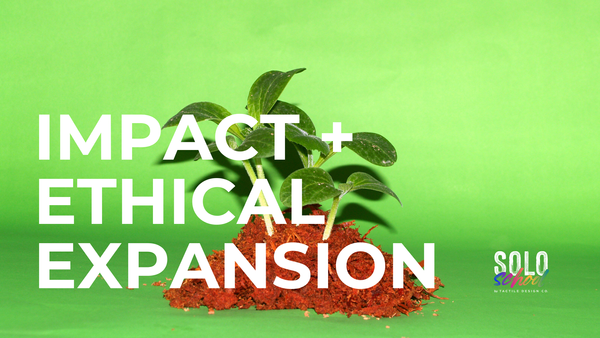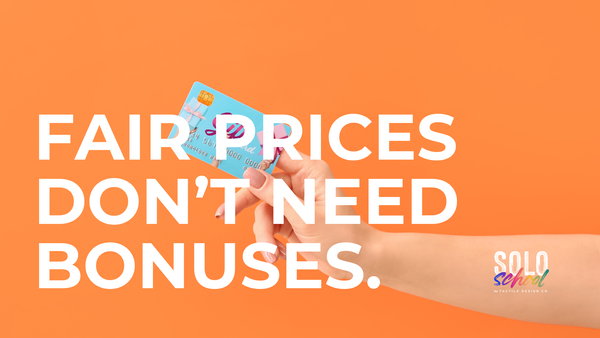So. You've gone through the first three stages of building a business.
You ideated your offer and market and pricing and product.
You validated the product-market fit with at least five sales.
You generated predictable, reliable lead flow and repeatable business.
Now you're ready to expand.
Just getting to this stage is a goal for many. To be in a place where demand outstrips capacity for the high-touch offerings, and you can move into scaling lead flow, conversion, and delivery...
This is the goal. Right here.
Do yourself a favour and stop for a second, and breathe it in.
Recognize how long you've been working toward this very moment. When you knew it was time to level up, or level off.
Not everyone moves to expansion. That's okay.
The goal of business for most people isn't growth for the sake of growth. It is to find a sustainable balance between effort and output, between what you give and what you get. The goal of business for the vast majority of people is to sustain yourself and your family and possibly your community while still having a life.
If this is you, then congrats.
Your job here is to determine the next step.
Do you scale your prices only? Become a bit more exclusive, increase your income without having to increase your time investment?
Do you keep your current rates and stay sustainable, but scale back your marketing a touch so you have more free time?
Do you keep things exactly as they are and just enjoy the stability for awhile?
Only you can decide, but decide you must.
For the rest of us...
This is where the second half of the journey begins.
I say it is the second half, but it actually never really ends. It's more like the series that comes after our feature film - and it just keeps getting renewed season, after season, after season, until we decide to write the finale.
The job for entrepreneurs entering the expansion phase is, as I mentioned, to scale lead flow, conversion, and delivery. So how do we do that?
It all starts with documentation.
A common problem for neurodivergent business owners, especially those with ADHD, is that we know that we do things but not necessarily how we do things. This is why delegation and team management are challenging for us at times.
Another problem? Object permanence.
See, this expansion stage is often where freelancers and founders who want to scale will basically forget that anything has ever worked in their business before. They'll start everything over from scratch. New funnels, new audience, new offers, new everything. The assumption is "what got me here won't get me there", but that is not necessarily true.
So, we document things.
A lot of these things will change as you go. Don't worry. It's okay.
The documentation you're preparing in this stage isn't intended as the 10 Commandments of your business, guiding you for millennia. They're literally just an understanding of the current state of things, so you don't forget.
Inside Solo School, we have a template for this process.
It helps you understand what you need to document, and acts as a bit of a checklist to help you create the beginning of your knowledgebase.
Everything from customer journey and lead sources to social platforms and offers, this step is more of an inventory than true documentation - but it's entirely necessary. You have to understand how you've gotten here in order to scale.
Of course, you can also document processes.
One of my personal favourite tools for this is called Scribe.
Scribe is a Chrome plugin (among other things) that acts as a screen capture and documentation tool. As you do something on your computer, clicking through, the Chrome plugin will log every one of your link clicks, URLs, scrolls, text entries, and more, with screenshots of everything you've done.
Then at the end, it provides you with an embeddable tutorial for the thing you did.
Here's a sample one I just made for visiting this website and subscribing:
It took less than 5 minutes. This tool is great for documenting things that are repeatable processes, like client onboarding tasks, scheduling events, and things that happen with some frequency in your business.
You'll also want to make sure you document some basic decision-making or knowledge about your company, including things like:
- Your vision, mission, and values
- Your brand style guidelines (logos, colours, fonts, etc.)
- Your company bio
- Blurbs about each product and service you offer
- Past marketing campaigns and how well they've worked
- Future plans and goals
- Company history to this point
- Any client or customer manuals or FAQs
And anything else you feel would be helpful for someone new to your company to know, OR something you want to keep logged for the future so you can remember the way it looked today.
Yes, you can go full nerd and create a marketing plan and/or business plan, too!
Next, we develop the mindset.
Being a CEO isn't about being the "boss"... That's middle management stuff.
Being a CEO is about holding a vision for the company. It's about facilitating value exchange between the internal parts of your company (your team, your IP, your systems, your tools) and the external world (clients, customers, collaborators, your network, your community, the economy as a whole.)
Your job, should you choose to accept it, is to make it as easy as possible for those INTERNAL systems of value creation to provide value to the external world - and to make it as easy as possible for the external WORLD to provide value in return.
If your team provides services in exchange for money, your job is to make it easy for them to be very valuable and easy for people to get the value.
If you make physical products, your job is to make sure those products easily create value while making sure it is easy for customers to get value from them.
This is not about efficiency at all costs.
This is not about cutting corners, or trimming back expenses, or "restructuring" your business into oblivion to eek out pennies more profit at the expense of your team, your tools, your customers, your community, and your reputation.
This is about facilitating the value exchange between two groups, making it as smooth and mutually beneficial as possible, and taking your cut for arranging the whole thing.
Sometimes, that looks like giving your team raises so that they can feel more secure and create better ideas for clients.
Sometimes, that looks like hiring someone that isn't necessary but will make the value creation process smoother.
Sometimes, that looks like lowering your prices to make the value exchange more equitable on both sides. Other times it might look like raising prices while offering a more accessible option that is less labour intensive so you can broaden your impact without overburdening your team.
It can mean improving customer onboarding, or rewarding loyalty (internally or externally.) It can mean supporting projects in your local community that make your team or your customers feel better about working with you.
Everything you do as the CEO should be making it EASIER for your internal tools, team, and systems to create value, and for the external world to exchange money for that value.
At this stage, your eventual goal is to remove yourself from the actual value creation.
This is hard for a lot of entrepreneurs, and that is why I said that for many of you reading this, expansion isn't the goal. Sustainability and a regulated nervous system with work you love is the goal. And there is nothing wrong with pumping the brakes there and enjoying what you've built.
Nobody has to scale.
But if you want to scale, this is the job.
No longer being the value, but facilitating the exchange of value so that you can positively impact more people.
You'll also need to get your personal house in order.
If your body feels neglected, set up systems to support it. If your family time hasn't been protected before, now is the time to protect it. If you need support with cleaning, shopping, cooking, or personal admin, now is the time to hire it.
Remove the executive functioning burdens of your day to day life wherever you can, so that you can spend your personal time truly enjoying your friends, family, hobbies, whatever you have.
And save those spoons for the joyful moments you create + the business you're building. Anything that is unsupported at this stage will not be as easy to support later.
Now, when you're ready, let's scale delivery.
Scaling delivery means making it possible for more people to buy from you.
For service providers, this often means either providing one-to-many services like workshops or teaching or group coaching/consulting programs, hiring a team to provide services, or both.
For people who create products, it often means smoothing out manufacturing and building more capacity in your manufacturing process. This likely means more people, but could also mean new or different machines or suppliers, product tweaks to improve quality at higher volumes, etc.
While we have a lot of information about scaling delivery that we could share, the most important thing to understand is that this process is highly individual and anyone who promises you that they can scale your particular delivery model if you just follow a template or their exact process is leading you down a path you probably don't want to be on.
Don't do this too quickly.
Many a product, service, and even business have been wiped out by scaling delivery too fast, trying too many things, cranking the volume up before systems are tested and ironed out.
Remember that having a waitlist is actually a GOOD thing. A little bit more demand than supply is a nice little security blanket for your success.
Next, we scale lead flow.
Often, people will try to scale conversion here first. And I get it. You've got the capacity to sell more now because you've scaled up your delivery, so you want to get more customers out of the lead flow you've already got!
But do you know what happens when you scale up conversion before you scale up lead flow?
You exhaust your current audience and lead flow too quickly.
Basically, this is why you sometimes see companies make a BIG splash when they're scaling and then disappear completely. They created capacity, and they tried to fill it exclusively from their current lead flow... So when it ran out, they had expensive delivery systems and conversion mechanisms and no one to pay for them. Feast -> famine -> freefall.
Scale. Lead flow. First.
If you're at this stage, you have a working conversion mechanism already and now you have access capacity to deliver your products or services. Your job right now is to double down on what has been bringing in new leads, and put those leads through your existing conversion mechanisms, into that new delivery capacity.
You can do this through:
- Increasing content volumes or distribution
- Partnerships, referrals, and systemization (affiliate programs, too!)
- Paid media such as social or search ads, newsletter placements, sponsorships
- Publicity and visibility campaigns (now is the time to write that book and go on a podcast tour!)
Or anything else that will realistically increase the number of new people who meet you. This means the metrics to track are things like email list, social media followers, and website hits, as well as leads coming directly into your conversion mechanisms.
If we can get the number of new eyeballs UP, then we can work on getting them into the conversion mechanism. If we can convert a decent number of them, they go into our newly scaled delivery mechanism.
Once our conversion mechanisms start to get overwhelmed...
Then, and only then, is it time to scale conversion.
A lot of people will be hand-selling up until this point. Possibly even 1:1 on actual sales calls with people, as the CEO.
Most people would tell you that is bad, or wrong, or a waste of time, but here's the real truth:
Every piece of automation or distance between you and the buyer that is added to the conversion process creates friction.
Sometimes, friction is good. It can slow down the flow of new customers when you don't have capacity (like before), when you're trying to filter out certain types of customers by adding specific types of friction, or when slowing down the purchase intentionally improves client retention.
But until you have the volume of leads to justify losing a few in exchange for the increase in customer volume you can get from the automation, it usually doesn't make sense.
Let me explain this another way.
Let's say you have 10 leads coming in each month, and your conversion mechanism is a 1:1 call with them. You have a 50% conversion rate, your delivery is set up to handle 5 clients per month, all is well.
Most people are going to tell you that to scale, you first want to get out of 1:1 sales calls, right? Automate that! You can reach more people at once!
Sometimes in the B2B space they'll recommend something like a webinar.
A good webinar has a 10% conversion rate.
So if you scale your conversion mechanism FIRST, you will either:
- Only get one new client each month, or
- Need 5x more leads coming in.
Yeah, you freed up your time, but at what cost?
If you scale the lead flow FIRST, and have 100 people vying for your 1:1 sales calls, and the capacity to work with 10 clients at a time...
THEN it makes sense to run a webinar, convert the 10% off the top, and be more efficient. Because you can't serve 50 clients anyway, and likely don't have room on your calendar for 100 calls.
Capacity first (so you can handle more clients.)
THEN lead flow (so you have more potential clients coming in.)
THEN, and ONLY then, conversion (so you can free up your time.)
Nothing automated or scalable in conversion will ever outsell hand-selling your product, so the choice to scale lead flow must be made only when the available leads outstrip capacity to convert them.
How do we scale lead flow?
- Automations that nurture leads, like retargeting ads, email campaigns, branding campaigns, events and activations, etc.
- Sales teams (if your product is high-value enough to provide a good ROI after compensating a sales team well for their efforts)
- Touchless sales flows (ecommerce, webinars, sales pages, wholesale - though the wholesale accounts themselves will still require high-touch!)
Easier said than done.
The thing about this stage of business is that unlike the other three, this stage never really ends. You just repeat the cycle.
- Increase capacity until you have an oversupply.
- Increase lead flow until you have more prospects than you can convert.
- Increase conversion flow until you have more clients or customers than you can serve.
- Rinse, repeat.
It will also test you beyond anything in any of the other stages. While you're likely more adequately resourced than you were in the earliest stages, there is nothing easy about watching an ad that worked before stop working this week, or managing a sales team, or handling the other growing pains that come with scaling.
This stage of business will call you to work through and overcome more of your personal challenges than anything else you've experienced so far.
But if you're up for the challenge?
It is also the stage that has the most to offer you, your team, your clients, and your community. It has the largest opportunity to create impact. It has the greatest potential to give you resources to contribute and collaborate with others.
It can give you and your community a lot more of what you want and need...
... if you're prepared to handle what comes with it.
Thankfully, you don't have to handle it alone.
I'll be honest, Solo School is in this stage! (Frankly because there's nowhere to go after this, but still.)
So our members who are in this stage? They of course get our expertise, but they also get peers and community who understand what it is like to go on this brave adventure because it is one that they are actively on.
Are you an Expansion stage business interested in support, or an earlier stage business with your eyes set on Expansion soon and you'd like some help to get there? Check out Solo School LIVE starting in September!



